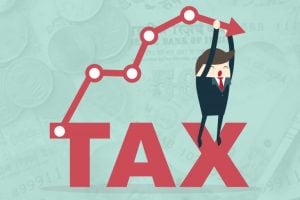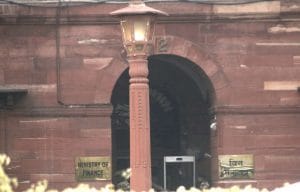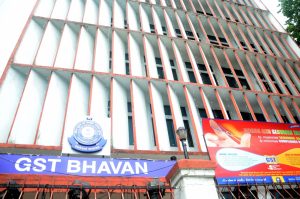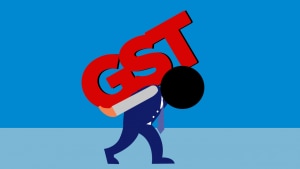The Union Budget 2021 changes in GST law
Summary
The recent Union Budget did not propose any changes in the GST rates; this being possible only on the recommendation of the GST council. So, the debate about the rates being high, about the multiplicity of slabs, about the need to converge rates, will continue.
The recent Union Budget did not propose any changes in the GST rates; this being possible only on the recommendation of the GST council. So, the debate about the rates being high, about the multiplicity of slabs, about the need to converge rates, will continue.
The Finance Bill 2021 however did propose several important changes in the GST law. These, spread from clauses 99 to 114 of the Bill cover a range of issues.
Three amendments are proposed to be effective from July 1, 2017. The first, (Sec 7 (1)) of the CGST Act seeks to undo a Supreme Court decision which had in the context of the erstwhile service tax held that there cannot be the sale of goods or services between unincorporated private clubs and its members owing to the principle of mutuality—the Supreme Court order basically treated the club and its members as the same person. The proposed amendment seeks to expand the scope of the concept of supply to specifically include such activities as taxable events. A consequential amendment proposed is in Schedule II of the Act which specifies the activities or transactions to be treated as supply of goods or supply of services.
Another amendment which has been proposed to be made effective July 1, 2017 is the proposal that interest would be charged only on net cash liability in cases of a delayed payment of tax. This is in keeping with the recommendation of the 39th GST council.
The unhealthy precedent of retrospective amendments in fiscal laws thus continues in this Finance Bill also. We should remind ourselves that the Supreme Court while approving retrospective amendments which are beneficial, has frowned on others. In its 2018 observation in civil appeal No.5793 of 2008, the Court had held that the legislature cannot overrule any decision of the judiciary by retrospective amendments because that will amount to violating the concept of separation of powers.
The Finance Bill also seeks to address the issue of pernicious and large-scale misuse of the input tax credit. Thus, additional conditions have been prescribed (Sec 16 (2)) for availing credit, namely that such credit will be available only if the details of the invoice or debit note on which credit is being availed have also been furnished by the supplier in the statement of outward supplies which details have been communicated to the recipient. This is in keeping with the recent amendment made in the CGST rules whereby the credit has been restricted to 5 percent in respect of invoices not furnished by the supplier.
Again, in keeping with the concern regarding fraud, amendments have been made in the section relating to fraud (section 74) thereby making explicit that in cases of fraud involving the detention of goods or conveyances, action to confiscate and penalise can be initiated and that such cases will not be covered by the liberal penal provisions.
A change which has serious implications for GST is the amendment proposed in the Customs Act (Sec 113 of the Customs Act) whereby customs officers have been empowered in cases where there is a wrongful claim of the refund to confiscate the goods meant for export. Another amendment (subsection 1 of Sec 83 of CGST Act) again seeks to strengthen the hands of the enforcement by providing that that provisional attachment of any property, including bank account, can be made not only to a taxable person but also to any person involved with the offence.
In keeping with the same tenor, several amendments have been proposed which appear stringent-proposal to increase the penalty from 100 percent to 200 percent for release of detained/seized goods and conveyances; provisional release in cases of detention/seizure to be permitted only on payment in cash as opposed to the earlier provision of execution of bond; to increase the option for release of goods where the owner does not come forward to 50 percent of the value of the goods or 200 percent of the tax payable whichever is higher; to empower the department to dispose of goods detained/ seized if the penalty imposed is not paid within 15 days from the date of receipt of the order imposing the penalty. All these are harsh measures-necessary perhaps but to be exercised with caution and under strict well laid out protocols.
Appeals would now become difficult in terms of the proposed amendment in Sec.129(3) of the CGST act. A deposit of 25 percent of the penalty has been proposed, up from 10%. While this should reduce frivolous appeals, it also casts on the adjudicating authority the responsibility to wield powers of the imposition of the penalty with greater circumspection.
A proposal which has caused a lot of concern with the Institute of Chartered Accounts of India (ICAI) is the doing away of the mandatory requirement of getting annual returns audited/reconciled by the CA; self-certification which is a natural step forward of self-assessment has now been proposed. The ICAI has claimed ‘that thousands of crores of rupees collected in tax (GST) happened because of the chartered accountants” This is sheer hyperbole. In any case, the role of the CA in the finalisation of accounts in terms of the Company Law remains untouched; and my estimate is that most/all companies will continue to use the CA also for the purpose of GST reconciliation and use that as a basis for self-certification.
The IGST provisions have been amended to restrict claiming of IGST refund in case of supplies to SEZ’s only to the notified class of suppliers or goods. This in effect has also the consequence of withdrawing the earlier facility of exports on payment of IGST-the earlier option of either exporting under bond/LUT or on payment of IGST being modified. Federation of Indian Exporters Organization (FIEO) has expressed deep concern at this change and sought a reversal to the earlier regime. Incidentally, the rates under the Remission of Duties and Taxes on Exported Products (RoDTEP) available on all exports from January 1 should be announced urgently.
Apart from this, they have been other sundry changes—empowering the Commissioner to call for information, restraining the Commissioner from disclosing the information without first hearing the party concerned etc.
The Budget, unfortunately, missed the opportunity to expand the base of GST by bringing petroleum products within its ambit. Petroleum products being out of GST, have an impact on prices. The GST Council needs to seriously debate this and appreciate that imposition of GST on petroleum products will ultimately reduce the tax burden across commodities.
—Najib Shah is the former chairman of the Central Board of Indirect Taxes & Customs. The views expressed are personal
Read his other columns here

Elon Musk forms several ‘X Holdings’ companies to fund potential Twitter buyout
3 Mins Read
Thursday’s filing dispelled some doubts, though Musk still has work to do. He and his advisers will spend the coming days vetting potential investors for the equity portion of his offer, according to people familiar with the matter









 Listen to the Article
Listen to the Article  Daily Newsletter
Daily Newsletter












